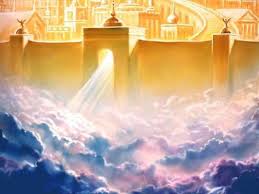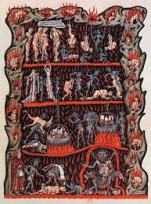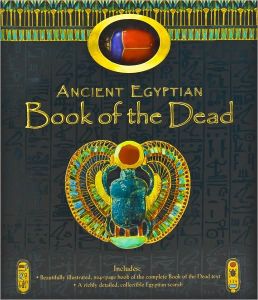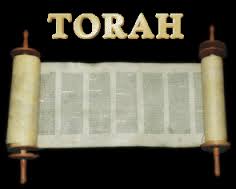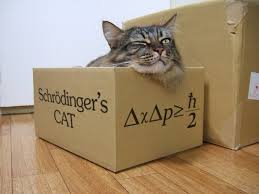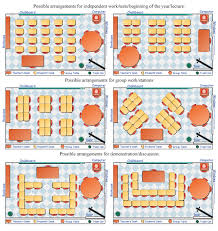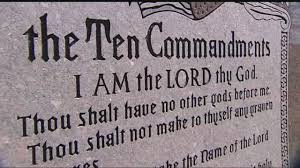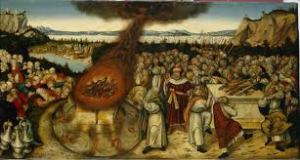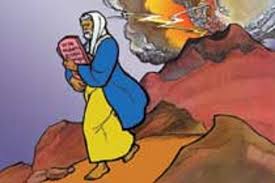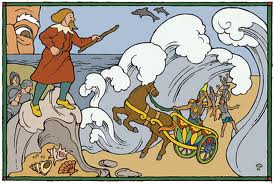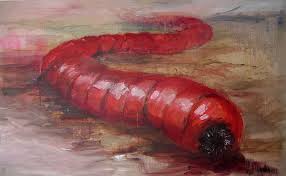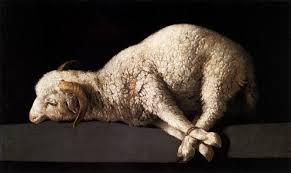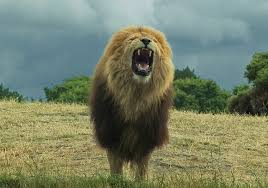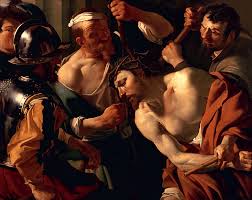Gender Entrapment Exposed in Mad Max: Fury Road
Gender stereotypes are seen in literature as well as cinema. Males, in American culture, are typically depicted as tough and rugged while women are depicted either as mothers or temptresses. Storylines are also greatly influenced by gender typecasts; for instance, the damsel in distress is always saved by the strong, masculine male, or the man falls to destruction due to the scandalous temptress and her feminine wiles. These types of archetypes in cinema play a strong role in popular culture. The writers for Mad Mad: Fury Road, however, work to dismantle both character and plot stereotypes through the juxtaposition of both Max to Furiosa and Furiosa to the wives of Immortan Joe while also adhering to the typical post-apocalyptic portrayal of women as seen through the wives and the Vuvalini.
The title character, “Mad” Max Rockatansky, is typically portrayed in a very manly manner. In Mad Mad: Fury Road, however, he is held captive and at the mercy of the war boys. His inability to escape this fate encourages a weakness to his traditionally masculine reputation. The use of the muzzle-like contraption also helps create a similar weakening effect by representing his lack of voice and consequently the film’s lack of a masculine voice. His emasculation is enhanced by the juxtaposition of his character to Imperator Furiosa.

Though Mad Max is the title character, this film is dominated by female characters. Some of these characters fit stereotypical female stereotypes while others, such as Imperator Furiosa, do not. Furiosa is depicted in a very masculine light throughout the film. She has a very short, manly hair cut and wears a black leather outfit. Her appearance helps the audience see her as strong and tough. Her rough exterior helps the viewers better associate Furiosa with the male dominated Citadel and its war boys. Charlize Theron, the actress that plays Furiosa, made the decision to shave her head for the role stating that, “she had to almost disappear in this environment and everybody had to get to a place where they almost forgot that she was a woman. And I just didn’t know how to do that with a ponytail” (Coyle). Furiosa’s invisibility within the war boy culture is effective and causes audiences to generally associate her more with the war boys than with any of the other female cultures in the film, this includes the Vuvulini she was originally a part of. Her appearance, however is not the only thing that is not typical of a female character in modern American film.
Furiosa’s role in the Citadel is also one that goes against both the gender roles of both the setting’s culture as well as modern cinema. Not only is she the only female depicted as being a member of the war boys, but she is also the driver of the “war rig.” Typically, the driver of a vehicle, especially a war vehicle, is in a place of power and is not normally a woman. War, throughout history, has been dominated heavily by men. Therefore, the vehicle’s title including the word “war” gives it a very masculine connotation which further encourages the masculinity associated with Furiosa. Her dominant role as the driver is another way that the writers depict her dominance and show how a woman can have just as dominant a role as a man in modern film. One critic comments on her role as the driver by arguing that the movie is “essentially a two-hour car chase_ that’s literally and effectively driven by a strong woman” (Coyle).

Furiosa is also portrayed as the knight in shining armor (or in this case leather armor) that saves the damsels in distress from the evil villain. One of the main plot points of the film is the escape of Immortan Joe’s wives from their captivity as breeders. These wives are snuck out of the Citadel and are hidden by Furiosa in the war rig. Once again, Furiosa is not depicted by the roles that most female characters are forced to play in the typical American film. The wives, however, are not the only ones saved by Furiosa. There is a gender role juxtaposition between Furiosa and Mad Max in which Max is the damsel and Furiosa, once again, plays the role of the valiant knight and helps rescue Mad Max from the war boys and a life as a human blood bag. The juxtaposition of Furiosa to Mad Max helps illuminate the masculinity of Furiosa while emasculating Max.
While Furiosa exudes masculinity and breaks through the barriers of cliché female roles, the wives of Immortan Joe seem to represent the femininity that Furiosa breaks free from. As previously mentioned, Furiosa is dressed in rough leather and has a short, male haircut. The wives, on the other hand, are depicted in a very different way. They all have long flowing hair and dresses that match. There is a distinct softness in their appearance that is only deepened when compared to the harshness of Furiosa. They are also all wearing white. The white garments help the viewer to associate them with innocence or the purity of a virgin, which is one of the most stereotypical role played by women in film. This idea of virginity is enforced by the use of chastity belts that Immortan Joe forces his wives to wear. The chastity belt represents the literal entrapment of these women as well as the allegorical entrapment of actresses in film by the roles they are forced to play, such as that of the innocent virgin.
The virgin, however, is not the only role played by the wives of Immortan Joe. One of the wives, Splendid Angharad, is pregnant with Joe’s heir. She is the most important of all the wives because she represents the future of Joe and the Citadel. For Joe, immortality is found within his offspring, and therefore, she represents hope for his future. Splendid Angharad’s forced motherhood also represents the roles of motherhood that women are forced to play in American culture.
The ideas of virginity and motherhood are taken away when the women use the water source to wash themselves. Viewers may argue that this scene represents yet another archetypal role of woman, that of sex idol, due to their soaked white garments. This scene may look like a post-apocalyptic wet tee-shirt contest, but one could argue that this scene represents something much more for these women. For instance, the water in this scene is not just water, it is a precious and rare commodity. As depicted in the beginning scenes of the film, water is controlled by Immortan Joe and in the dessert landscape is scarce and considered almost sacred. For those living in this post-apocalyptic terrain, water represents life. The woman taking control of the water helps represent to the viewers that they are taking control of their lives.
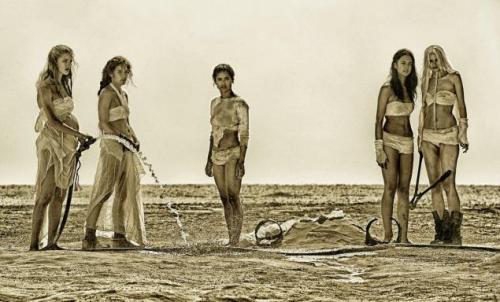
As the women wash themselves with the water, they undergo a metaphorical baptism. Not only are they washing themselves off physically, but they are being emotionally cleansed as well. During this baptismal action the wives remove all signs of Immortan’s Joe’s entrapment by ridding themselves of the chastity belts they were forced to wear. This represents the change from the old life of confinement to a new life of freedom and possibility. This new life is one in which these characters are no longer trapped by stereotypical roles but are able to break free from them. After this baptismal scene, the wives are no longer depicted as weak or scared. Instead they are empowered, strong, and brave. As the wives continue to escape the Citadel with Furiosa, they begin to start working for their own freedom; they are no longer damsels in distress and Furiosa is no longer the knight in shining armor. The wives begin to work with Furiosa to help escape Immortan Joe, instead of playing an idle role in their freedom.
When Immortan Joe realizes that the women are gone and with them his immortality, he and his war boys travel after them to bring them back to their imprisoned state in which they will continue to be sex slaves and breeders. As Joe catches up to the war rig, containing not only Mad Max and Furiosa, but his wives as well, he makes the decision to shoot at the vehicle in hopes of capturing the wives and returning to the Citadel. His plan backfires as Splendid Angharad leans out of the war rig and flaunts her pregnant stomach forcing Joe to not to shoot which saves the war rig. Motherhood, the very role that she was entrapped by, is the role that empowers Splendid and ultimately saves the war rig. The salvation of the war rig is found through Joe’s incessant need for the immortality encased the forced motherhood of his captive. Similarly, the writers of Mad Max: Fury Road use this portrayal of motherhood to show that women can be the hero without losing their femininity.
With the subordinate role of Mad Max, the dominating role of Furiosa, and the empowering roles of the wives, one could argue that this movie does not follow the gender roles that are typically portrayed in modern American cinema. However, one could alos argue that it does portray a general characteristic of post-apocalyptic film. According to Jennifer Skinnon, modern post-apocalyptic film generally portrays women through the role of motherhood represented by the pregnant female body. In “Redemptive Motherhood and a Discourse of Fear in Contemporary Apocalyptic Film,” Skinnon argues that these films use, “the pregnant female body (and as extension the social construction of motherhood) as a source of redemption for individuals and society-at-large,” (Skinnon 58). Her argument can also be applied to Splendid and the Vuvalini in Mad Max: Fury Road.
As previously stated, Splendid saves the war rig from being fired upon by Immortan Joe by flaunting her pregnant stomach. Her act of rebellion directly correlates to the ideas of redemption that Skinnon argues. Splendid represents redemption in that her offspring represents the hope of the future of Joe and his empire. The simple action of leaning out the door and showing her stomach was also the salvation for the passengers on the war rig. This action is also a precursor to the ultimate demise of Immortan Joe, which also gave hope for a new future in the Citadel.
The Vuvalini, though not pregnant, also represent the ideas discussed by Skinnon. One can argue that the pregnancy of Splendid Angharad represents a life-giving force or the ability to create and nurture life. For a people living in a post-apocalyptic desert, those in possession of seeds can represent a similar idea. Just as Splendid held the hope of a new generation, so does the character who holds the seeds. This member of the Vuvalini has the ability to enrich future generations by creating an environment full of life and greenery. The people living in this environment can find redemption and a new life through the use of these seeds. At the end of the film, the water is no longer stockpiled by the Citadel and flows freely for the people. With this newly found source, the seeds held by the Vuvalini could give a new source of freedom to the entire culture.
The writers of Mad Max: Fury Road use the post-apocalyptic setting of the film along with its abnormal gender roles to help bring to light the gender stereotypes of not only modern cinema but American culture in general. The masculine role and appearance of Furiosa juxtaposed with the subdued role of Mad Max help the audience attribute the dominant role in the film to Furiosa instead of the title character and typical lead, Max. Similarly, the juxtaposition of Furiosa to the wives of Immortan Joe illuminates the the masculinity of Furiosa. These juxtapositions work to show the stereotypes in film and show how female roles can break free of them. Though this film does not follow gender role stereotypes in regards to their characters, the movie does follow the generalization of women representing the future and a salvation from the present.
Works Cited
Coyle, Jack. ‘Amid male landscape of ‘Mad Max: Fury Road,’ Charlize Theron’s Strong Heroine Dominates.” The Canadian Press, 14 May 2015.
Skinnon, Jennifer. “Redemptive Motherhood and a Discourse of Fear in Contemporary Apocalyptic Film.” Americanist: Warsaw Journal for the Study of the United States. 1 October 2011, http://eds.b.ebscohost.com/eds/pdfviewwer/pdfviewer?sid=120.

